In Islamic countries such as Morocco, a misbaha hangs on to the vehicle’s rear-view mirror, like how a rosary does in Catholic countries. I watched one dangle to and fro with every move of the grand taxi we hired from Meknes. It had a somewhat soporific effect. And coupled with the sibilant hiss of the cab’s engine — as ancient as the Roman colonial city we were heading to — I found it a herculean task to stay awake.
We were cruising through a valley populated by olive trees towards the ruins of Volubilis. In just about five minutes, as I was about to drift to sleep, we reached the entrance of this UNESCO World Heritage Site. The parking space was near empty. My husband, daughter and I swiftly hopped out of the car, eager to explore without the crowds.
The air was crisp. The sky, cloudless. And the silence was broken once in a while only by the cackling of birds nesting atop pillars we saw from a distance. We walked past patches of pretty amber-hued wild flowers, in the direction of the archaeological site. I stripped out of my bag lady ensemble as we went, for the morning spring sun’s rays suddenly grew warmer.
Volubilis’ grounds were unsupervised, I believe ’til this very day. Save for a few cordoned-off areas, visitors can freely climb and walk on any of the restored structures. Exactly what we did the whole morning.
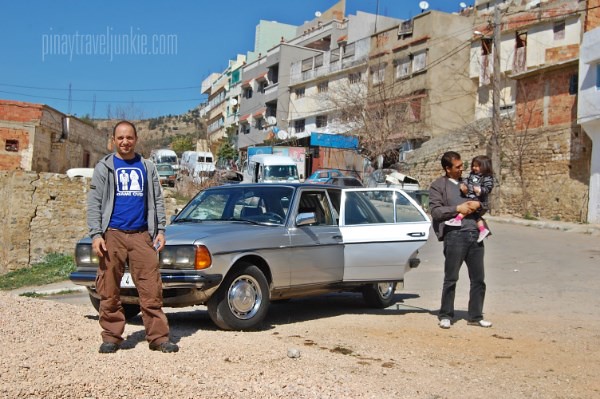 Brief stop at whitewashed town Moulay Idriss. Named after the great-grandson of Prophet Muhammad who found the settlement, and whose mausoleum stands just off the main square today. The town was off-limits to non-Muslims until the mid-20th century.
Brief stop at whitewashed town Moulay Idriss. Named after the great-grandson of Prophet Muhammad who found the settlement, and whose mausoleum stands just off the main square today. The town was off-limits to non-Muslims until the mid-20th century.
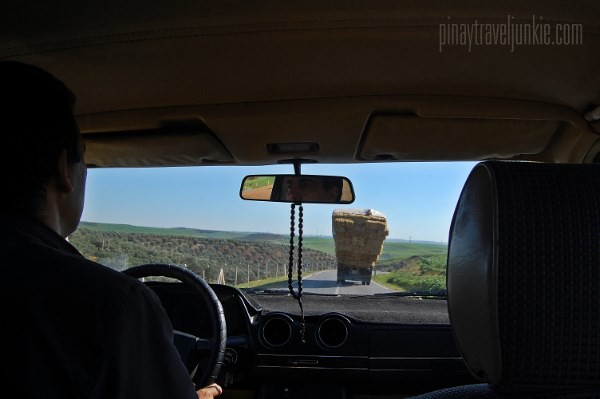 Passing by olive orchards. This fertile land produced commodities that brought significant wealth to the old Roman town.
Passing by olive orchards. This fertile land produced commodities that brought significant wealth to the old Roman town.
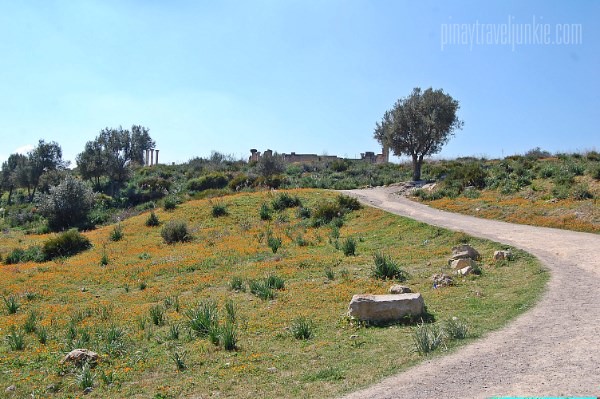 That easy, breezy stroll to the ancient city.
That easy, breezy stroll to the ancient city.
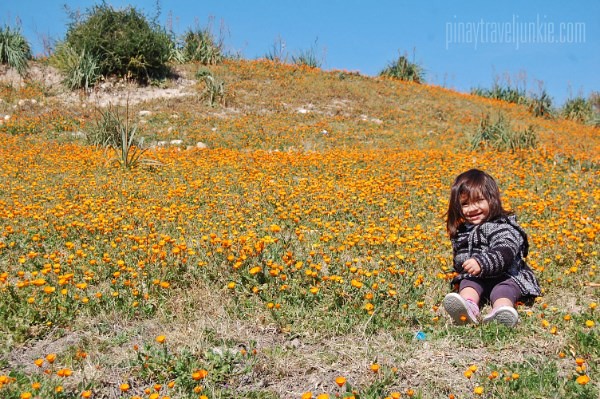 My own wild flower amongst other wild flowers. She just had to dive in.
My own wild flower amongst other wild flowers. She just had to dive in.
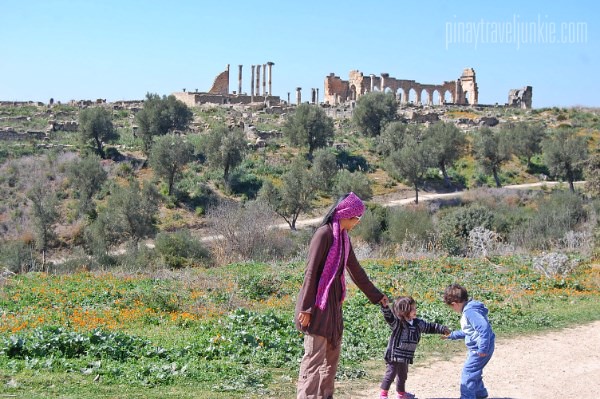 She liked him so much, she gave him the only flower she plucked. And he kissed her to say thanks.
She liked him so much, she gave him the only flower she plucked. And he kissed her to say thanks.
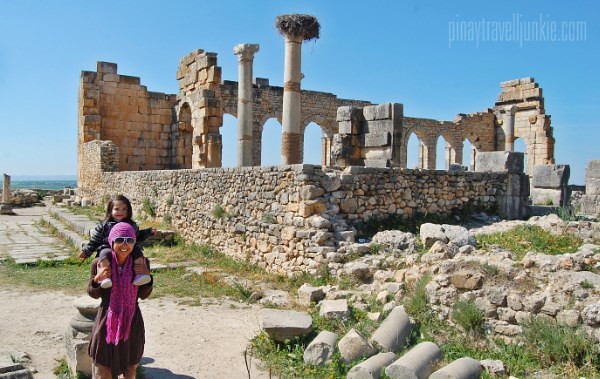 The basilica. Was used as a government building.
The basilica. Was used as a government building.
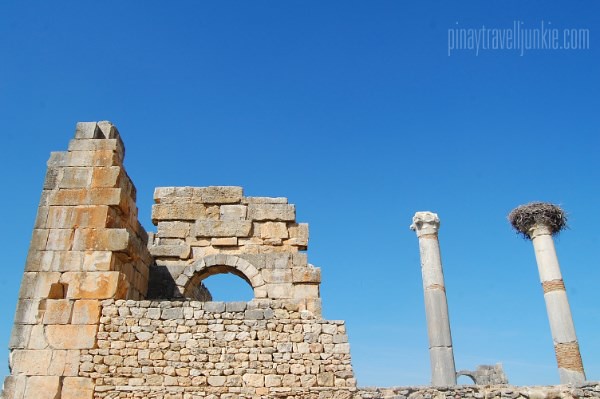 Pillars turned into pedestals for nests. A sign of ill-keeping. Or bird-loving caretakers.
Pillars turned into pedestals for nests. A sign of ill-keeping. Or bird-loving caretakers.
 So far, only about half of the ancient city has been excavated.
So far, only about half of the ancient city has been excavated.
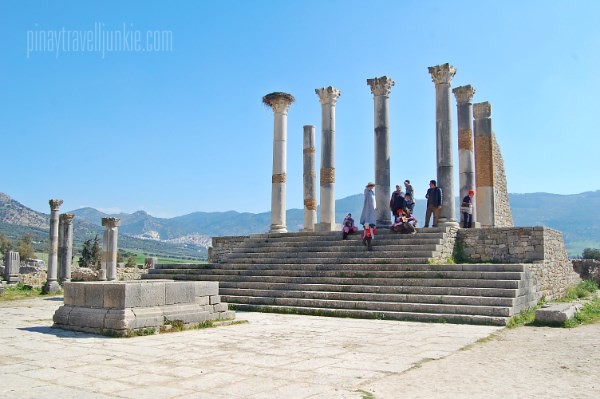 The Capitoline Temple, dedicated to Jupiter, Juno and Minerva.
The Capitoline Temple, dedicated to Jupiter, Juno and Minerva.
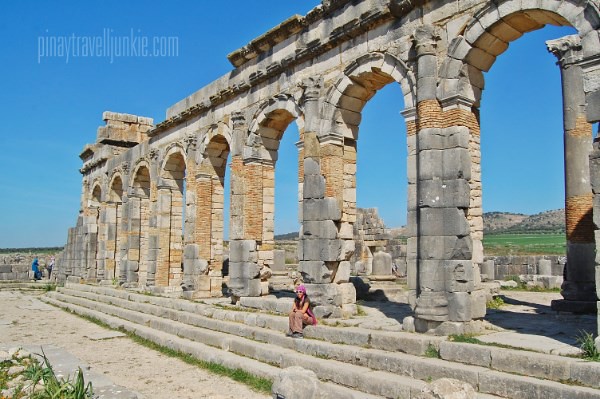 Volubilis was able to afford such grand buildings because of olive growing. The city was a major producer during Roman times.
Volubilis was able to afford such grand buildings because of olive growing. The city was a major producer during Roman times.
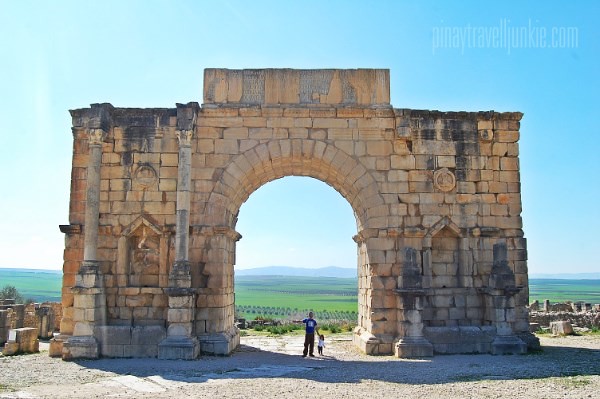 The Arch of Caracalla, at the end of the city’s main avenue. Built to honor Roman emperor Caracalla.
The Arch of Caracalla, at the end of the city’s main avenue. Built to honor Roman emperor Caracalla.
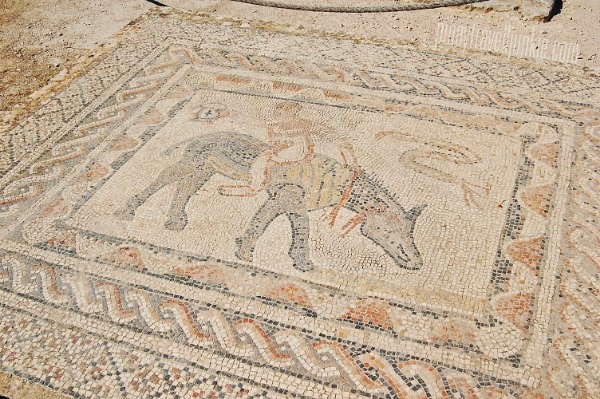 Wealthy families decorated their houses with elaborate mosaics. This one belongs to The House of the Athlete or Desultor.
Wealthy families decorated their houses with elaborate mosaics. This one belongs to The House of the Athlete or Desultor.
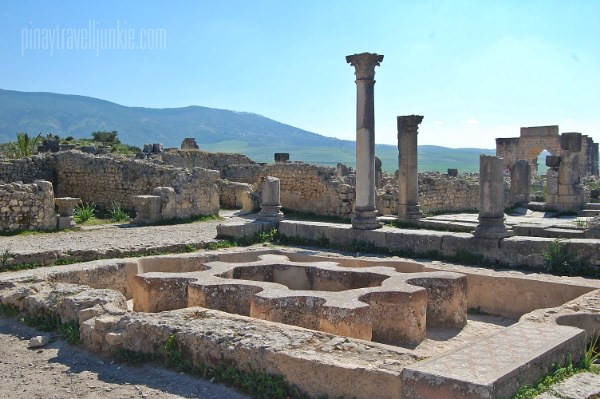 Interior of the North Baths. Aqueducts that fed the public baths show evidence of sophisticated city planning.
Interior of the North Baths. Aqueducts that fed the public baths show evidence of sophisticated city planning.
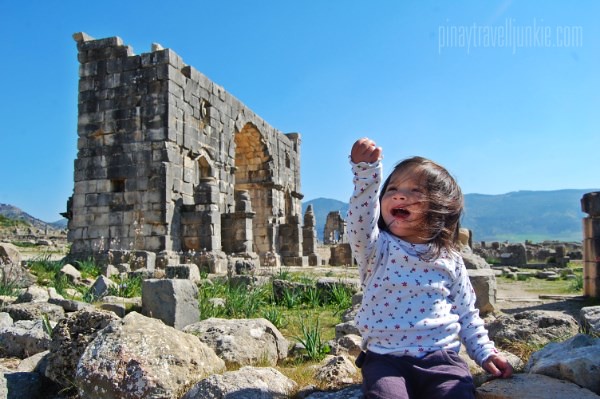 “Victoryyy!”. Oh nothing, just a cute snapshot to end this post.
“Victoryyy!”. Oh nothing, just a cute snapshot to end this post.
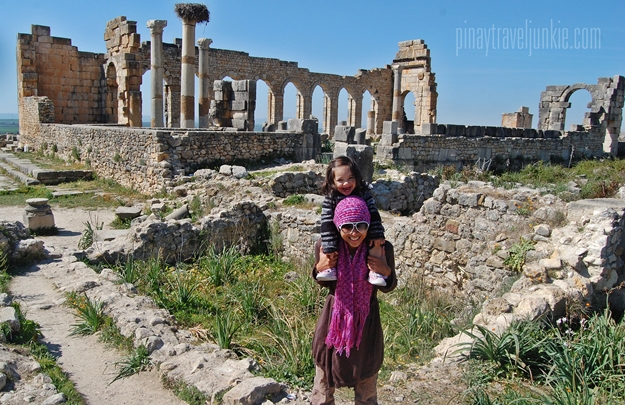















Ahhhh Volubilis!
One of my reasons to go back to Morocco in the near future!
Luna stole the show from the beauty of the ruins.
Haha, yeah, Luna the scene stealer 🙂
Love your photo essays Gaye. Keep them coming. Mishu down here in 12th Paradise.
Aww, thanks Avel. Miss y’all! Hope I get to visit again next year.
this looks more like greece/turkey than morocco, very interesting.